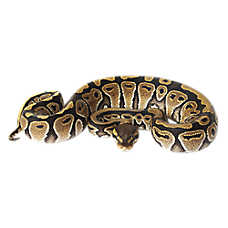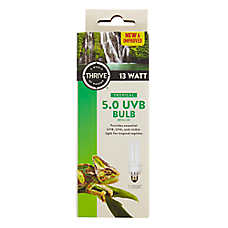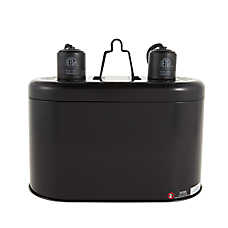Ball Python Care Guide
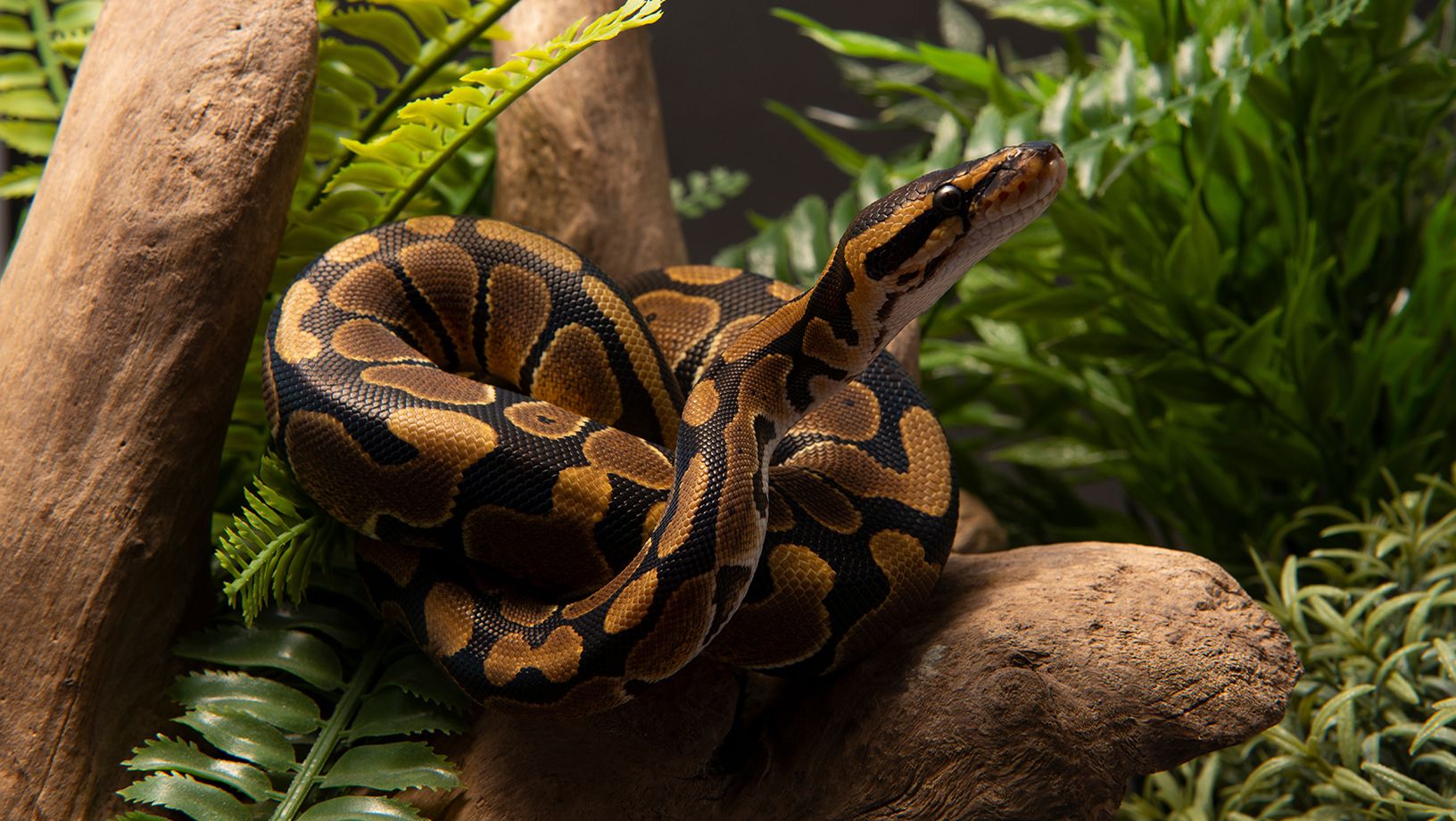
In this Article
Beautiful and Bashful Ball Pythons!
Ball Pythons, also called Royal Pythons, are a species of snake native to Western and Central Africa. Pythons are not venomous, and instead use constriction to slowly squeeze their prey, very similar to how boa constrictors hunt. They can come in a wide variety of colors and patterns, called “morphs.” Ball pythons get their name for the way they curl up into a little ball when coiled up.
Ball Python species profile
Size: Ball pythons grow up to 60" (152 cm).
Lifespan: Ball pythons on average live 20 to 30 years.
Diet: Ball pythons are carnivores and feed on rodents.
Behavior: Ball pythons are more active at night. When they are frightened, they coil up into a ball, hence the name! They get stressed when in large, open areas and prefer to have lots of places to hide.
Temperament: They are very shy animals and can be easy to frighten, but they are generally docile and curious snakes. As they become more comfortable, they are typically easy to handle. Ball pythons should be housed alone.
Ball pythons are often recommended for reptile keepers with some basic experience. While generally tolerant of handling, they are easily stressed by sudden movement, excessive light, or open spaces without cover. A secure, low-traffic environment and a consistent handling routine will help build trust over time.
Note: A frightened snake may lash with its tail, hiss or in rare cases, bite. While ball pythons are less likely to bite than some other reptiles, any animal is capable of biting. Ball Pythons are not venomous but due to the nature of eating raw meat, any bite should be thoroughly cleaned, and medical attention may be warranted.
Setting up a ball python habitat
A well-structured enclosure supports your snake’s health, reduces stress, and encourages natural behavior. Ball pythons require secure hides, a temperature gradient (meaning a warmer and cooler side), and controlled humidity to thrive.
Enclosure size and substrate
- Use a minimum 40-gallon glass terrarium with a locking screen lid
- The enclosure must be at least as long as the snake’s body
- Line the bottom with reptile carpet or 2 inches of reptile-safe substrate
- Avoid cedar, corncob, loose wood shavings, gravel, or dirt
Clean droppings frequently, stir bedding weekly, and replace all substrate monthly or as needed.
Temperature and lighting
Ball pythons are ectothermic and need a warm and cool zone to thermoregulate.
Zone | Temperature |
Cool side (day) | 80–85°F (27–29°C) |
Warm side (day) | 85–90°F (29–32°C) |
Basking site | 90–92°F (32–33°C) |
Night | 70–80°F (21–27°C) |
Humidity | 60–80% |
- Use a daytime heat bulb over the basking area. Turn it off at night.
- Avoid using hot rocks, which can cause burns
- Use two thermometers (one on each side) and a digital hygrometer
Low-intensity UVB lighting is optional but recommended. UVB helps with vitamin D3 synthesis and calcium metabolism. Choose a bulb labeled for UVB output and place it over the basking area.
Hides and humidity
- Provide two hides, one on each side of the enclosure
- Line the warm-side hide with damp sphagnum moss to create a humidity hut
- Add climbing branches, cork bark, and other textured surfaces for enrichment
- Use a misting bottle or automatic fogger as needed to maintain humidity
For more guidance, see PetSmart’s Reptile & Amphibian Heating & Lighting and Setting Up a Reptile or Amphibian Habitat care guides.
Care and Feeding
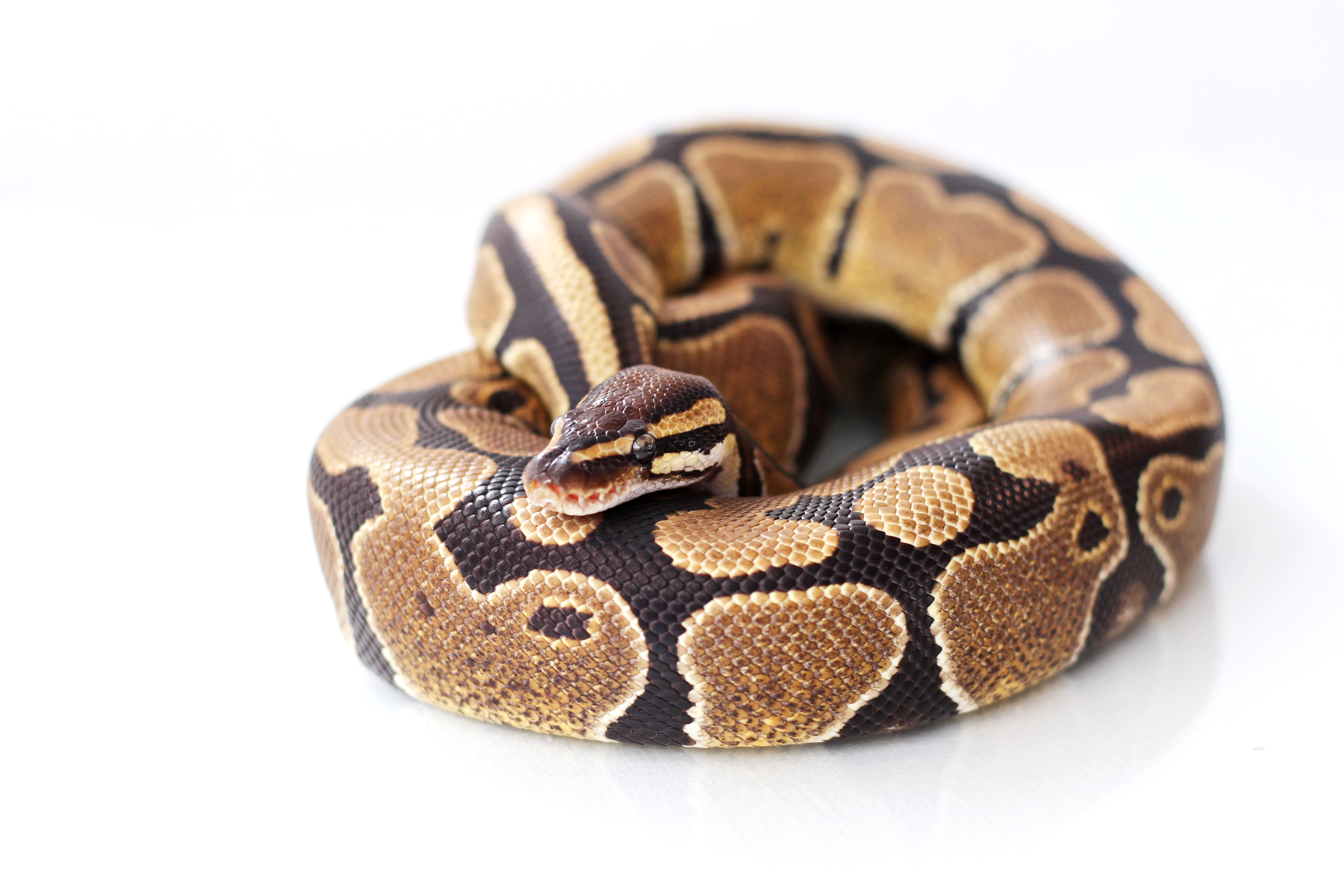
Ball pythons are carnivores, meaning they feed on other animals- typically small rodents. Every snake is a little different in terms of how often they want to eat, and what food item they prefer to eat. Prey options include frozen-killed prey that you’d thaw before offering to your snake, as well as fresh-killed meaning it was recently dispatched and can be offered as is (or frozen for later), and live prey meaning the snake would actively hunt it’s food in the habitat and/or in a feeding tank. You may need to try different feeding methods to see what your snake likes best and how often it wants to feed. All snakes sold by PetSmart have been feed a diet of frozen-then-thawed rodents appropriately sized for the animal.
Snakes should be offered food at night, although adults may not feed for several weeks at a time. Offer your snake food once a week for the first 2-3 years. Older snakes tend to go a little longer between feedings, closer to 10-14 days. It is recommended to use tongs to offer prey so your snake does not mistakenly strike at your hand during feeding time.
Recommended diet
Feed your ball python appropriately sized frozen-thawed rodents. Prey should be no larger than the widest part of the snake’s body.
- Offer food once per week for juveniles
- Reduce to every 10 to 14 days for adults
- Feed at night or during low-light hours when the snake is naturally active
- Always use feeding tongs to present prey
Avoid live prey whenever possible. Live rodents can scratch or bite and may injure your snake. If live feeding is required, supervise the interaction closely.
Feeding challenges
Ball pythons may refuse food due to:
- Stress or recent handling
- Incorrect humidity or temperature
- Pre-shedding behavior
- Food size or type preferences
- Environmental changes
- Illness or injury
If your snake refuses food:
- Warm the prey item slightly before offering
- Try leaving the prey in the enclosure overnight
- Double-check habitat conditions, especially temperature and humidity
- Offer a smaller rodent or a different prey item
If your snake refuses to eat for two consecutive feedings, review the habitat setup. After three missed feedings, consult a reptile-experienced veterinarian. It is important to note that your snake may not want to eat for the first 1-2 weeks after being adopted due to the stress of rehoming.
Water access
- Provide a sturdy, shallow water dish at all times
- The dish should be large enough for soaking
- Change the water daily and clean the bowl regularly
Some ball pythons soak during shedding or to regulate body temperature. Increased soaking may also be a sign of mites or irritation.
When to see a vet
In addition to regularly scheduled appointments, contact your reptile veterinarian if you notice the following signs:
- Hiding more than usual
- Eating or drinking less; weight loss
- Prolonged time refusing to feed (3 consecutive failed feedings) and/or weight loss
- Swollen joints or reluctance to move
- Discharge from the eyes, nose or mouth
- Discolored skin
- Runny or decreased droppings
- Inability to open/close mouth
- Stuck shed covering the eyes
Go to “find a vet” on arav.org for help finding a reptile veterinarian in your area.
NOTE: Most, if not all, reptiles carry Salmonella bacteria in their intestinal tract and intermittently or continuously shed these bacteria in their feces, so they are unsuitable pets for very young children and those with compromised immune systems. Good hygiene must always be practiced around all reptiles, and hands should be washed before and after interacting with reptiles.
SHOPPING CHECKLIST
- 40-gallon (32-36" long) terrarium or larger
- secured screened lid
- daylight bulb and under-tank heat mat for heat. Ceramic bulb and/or deep heat projector are also good options
- habitat thermometers (2) and a hygrometer
- water dish large enough for snake to soak in
- artificial/natural rock or wood hides (2)
- aspen, coconut fiber, sphagnum moss or reptile carpet/bedding
- branches for climbing and hiding
- food bowl
- frozen rodents and feeding tongs
Ready to learn more? This guide is a great starting place, but we encourage you to do more research on the individual species that you are keeping so that you can be as successful as possible!
Related guides:
- Reptile & Amphibian Heating & Lighting
- Setting Up a Reptile or Amphibian Habitat
- Understanding Zoonotic Disease
FAQs
How often should I feed my ball python?
Juvenile ball pythons should be fed once every 7 days. Adults often eat every 10 to 14 days. Always adjust based on age, size, and feeding response. Offer food in the evening to align with their natural hunting instincts.
Juvenile ball pythons should be fed once every 7 days. Adults often eat every 10 to 14 days. Always adjust based on age, size, and feeding response. Offer food in the evening to align with their natural hunting instincts.
Why is my ball python not eating?
Feeding refusal is common and may be caused by stress, shedding, incorrect temperature or humidity, or disinterest in the type or size of prey. Review habitat conditions, try warming the prey slightly, or offer a smaller rodent. If your snake misses three meals in a row, consult a reptile veterinarian.
Feeding refusal is common and may be caused by stress, shedding, incorrect temperature or humidity, or disinterest in the type or size of prey. Review habitat conditions, try warming the prey slightly, or offer a smaller rodent. If your snake misses three meals in a row, consult a reptile veterinarian.
Can I feed my ball python live prey?
Frozen-thawed rodents are strongly recommended. Live prey can injure your snake through biting or scratching. If live feeding is necessary, it must be closely supervised and only offered as a last resort.
Frozen-thawed rodents are strongly recommended. Live prey can injure your snake through biting or scratching. If live feeding is necessary, it must be closely supervised and only offered as a last resort.
What size prey should I offer?
Rodents should be no larger than the widest part of your snake’s body. Feeding oversized prey may cause regurgitation, injury, or digestive issues.
Rodents should be no larger than the widest part of your snake’s body. Feeding oversized prey may cause regurgitation, injury, or digestive issues.
Does my ball python need UVB lighting?
UVB lighting is not required but is beneficial. Low-intensity UVB can support vitamin D3 synthesis and help with calcium absorption. If used, place the UVB bulb over the basking area and follow manufacturer instructions.
UVB lighting is not required but is beneficial. Low-intensity UVB can support vitamin D3 synthesis and help with calcium absorption. If used, place the UVB bulb over the basking area and follow manufacturer instructions.
Why is my ball python hiding so much?
This is normal. Ball pythons are secretive and prefer tight, enclosed hides. Excessive exposure or lack of secure cover can cause stress and feeding problems. Ensure the habitat includes at least two hides—one on the warm side and one on the cool side.
This is normal. Ball pythons are secretive and prefer tight, enclosed hides. Excessive exposure or lack of secure cover can cause stress and feeding problems. Ensure the habitat includes at least two hides—one on the warm side and one on the cool side.
What humidity level is ideal?
Maintain humidity between 60 and 80 percent. Use a digital hygrometer to monitor. A humidity hut lined with moist sphagnum moss helps support healthy shedding. Mist the enclosure as needed or use an automatic fogger.
Maintain humidity between 60 and 80 percent. Use a digital hygrometer to monitor. A humidity hut lined with moist sphagnum moss helps support healthy shedding. Mist the enclosure as needed or use an automatic fogger.
How do I know when my snake is about to shed?
Signs include dull or bluish skin, cloudy eyes, reduced appetite, and increased hiding or soaking. During shedding, avoid handling and maintain proper humidity.
Signs include dull or bluish skin, cloudy eyes, reduced appetite, and increased hiding or soaking. During shedding, avoid handling and maintain proper humidity.
Can I handle my ball python?
Yes, once they are acclimated. Handle gently and infrequently at first. Avoid handling during shed cycles or after feeding. Regular, calm interaction helps most snakes become more tolerant over time.
Yes, once they are acclimated. Handle gently and infrequently at first. Avoid handling during shed cycles or after feeding. Regular, calm interaction helps most snakes become more tolerant over time.
When should I contact a veterinarian?
Seek care if your ball python experiences persistent feeding refusal, wheezing or discharge from the nose or mouth, swelling, abnormal droppings, prolonged hiding without feeding, or signs of mites or retained shed.
Seek care if your ball python experiences persistent feeding refusal, wheezing or discharge from the nose or mouth, swelling, abnormal droppings, prolonged hiding without feeding, or signs of mites or retained shed.
